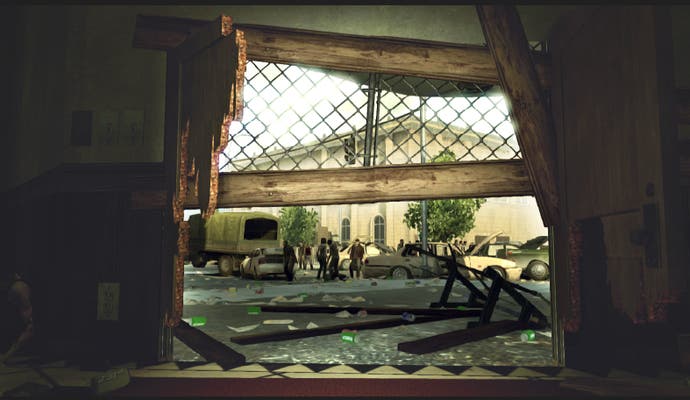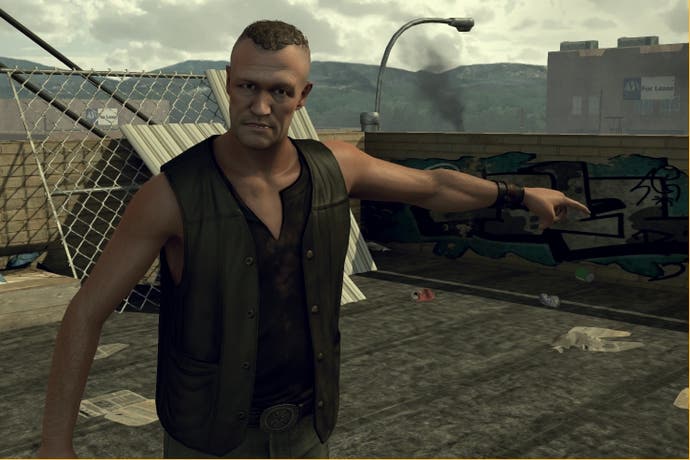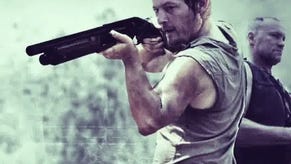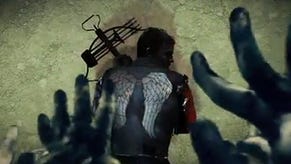The developer behind Activision's first-person Walking Dead game says don't judge it on old footage
Terminal Reality on the pressure of making a game based on the world's hottest TV show.
The developer behind Activision's first-person Walking Dead game has called on fans not to judge it on the recently-released, heavily-criticised gameplay footage that emerged late last year.
That, Terminal Reality's principal effects artist Glenn Gamble told Eurogamer in a recent interview, was "old footage". "We've made big strides since then," he said.
Earlier this month we ran a report based on a fan trailer that lifted official gameplay footage from The Walking Dead: Survival Instinct shown in a December 2012 interview Gamble conducted with IGN, and edited it together to form our first and best look at actual gameplay from the game. It was panned by gamers.
Last week Terminal Reality presented to us a live gameplay demo from a build dated 5th January 2013. Activision did not provide us with new gameplay footage to publish, but did send over new screenshots, which you can see below.
"I really can't go too deep into all that stuff," Gamble replied when asked about the reaction to the video.
"It's old footage. That's the short answer of it. Hopefully what you saw today proves testament to that.
"It caught us off guard. It was a fan trailer cut together from another interview I had done. Hopefully you saw the differences between the two. The game looks incredible. It was old footage. It's what we had at the time. We've made big strides since then.
"That's the thing about a game. It's constantly evolving and getting better. Time is the ultimate enemy of any game. If everybody had four years and an infinite budget every game would probably be infinitely better than they are. But eventually you run out of time and the date gets cut off and you just have to make the game at that point."
Activision's Walking Dead game is very different to Telltale's critically-acclaimed episodic adventure series.
It's described as a first-person survival game with elements of shooting - although shooting is not encouraged - and is based on the incredibly popular AMC Walking Dead TV series, not the comic book series by Robert Kirkman.
"It was a fan trailer cut together from another interview I had done. Hopefully you saw the differences between the two. The game looks incredible. It was old footage. It's what we had at the time. We've made big strides since then."

The game is a prequel of sorts, telling the story of Daryl and Merle Dixon as they fight through the Georgia countryside to Atlanta and what they believe will be safety from the walkers. You play as Daryl.
"We were wrapping up Star Wars and Activision came to us and were like, 'what could you do with The Walking Dead idea?'" Gamble explained.
"It's funny. They talked to [Transformers developer] High Moon too and High Moon grabbed Deadpool and we grabbed The Walking Dead.
"We all put our heads together and were like, 'we're huge Daryl fans and the people on the forum, they're huge Daryl fans, so, okay, the game has to have Daryl.' Well, we don't know where Season 3 is going because Season 2 was still airing at the time. We didn't get any of the juicy stuff till after we signed the contract.
"So it was like, 'okay, what can we do?' Well, Daryl is a survivor. We want to make a survival game. A good timeframe no-one's touched on is prior to everything going to pot. So it's a prequel. Okay, what's next? You see Daryl changing over the story arc in Season 2. What can we pull in from those little nuggets here and there we can tie in together? We started crafting the story around those elements. AMC liked what we were doing. We got a screenwriter in who helped us out and polished it up so it feels more like a story arc and less like a single-episode."
Survival Instinct focuses on stealth and distraction gameplay. The demo showed the player throw scavenged items, such as glass bottles, into a crowd of walkers to provide an opportunity to sneak past them. The AI is alerted to human sounds, such as gun fire, so shooting is only recommended when absolutely necessary. The walkers can smell the player, too. So hiding may not always be enough to avoid their attention.
"We wanted something different. Drop a Call of Duty player in our game and they're not going to last long," Gamble said. "We wanted a game that felt more real but at the same time being a little more faster-paced and not getting bogged down with the micro-management of some of the more complex games out there."
The mission shown was to attract a number of walkers into a church, then use fireworks to burn it down. Finding the fireworks involved scouting the area, avoiding the walkers along the way, while staying in communication with Merle. Then, once five sets of fireworks were found and placed, it was a case of finding a safe spot to watch the carnage before returning to the escape zone of the level.
"We wanted something different. Drop a Call of Duty player in our game and they're not going to last long."

Activision and Terminal Reality are keen for Survival Instinct to be called a first-person survival game because they feel the term FPS isn't appropriate. "Shooting is ringing the dinner bell," Gamble explained. First-person survival is about the best way to describe it. That's what we wanted from the beginning. Everything they do in the show we want to translate into the game. If you look at the show, they're trying their best not to use guns. In fact, in Season 3 they've got hand-built silencers on everything. That's how we tried to translate it.
"You want to be quiet. If you look at the show, three walkers is a threat. It almost takes out Rick [Grimes] in one episode in Season Two. Okay, there's our benchmark. Three should be that breakpoint. Everything we watched in the show we tried to translate into the game. They tried to be quiet. That's the big thing about our game.
"Once we started establishing human sounds and human elements to make those walkers more aware of the situation, we needed a list of human sounds. Gunfire fell into that. It's like building that universe as the universe is built. By sticking as accurate as we could be to the show, in following the rules of the show, it helped craft how the game was built. It works out well."
From a visual point of view, Terminal Reality, developer of Star Wars: Kinect and Ghostbusters, sprayed a sepia tone over the game to match its look to that of the TV series. The effect is the game has a yellow hue and saturated whites. "I don't know if you've seen any behind stuff of, say, Lord of the Rings," Gamble said. "They're out in New Zealand and one day is sunny and one day is cloudy. They run this post-process over everything to level out colours and colour match. That's really what we do there.
"Our game, we build it very realistic-looking but then we have this whole post-process we can run over it to naturalise out colours to level everything out, to get the whites to pop a little bit more, increase the yellows a little, to unify everything and at the same time give it its own identity."

As part of its research, Terminal Reality staff took botany lessons so they could create as realistic a representation of Georgia as possible. "That town [shown in the gameplay demo] is a great example," Gamble said. "Normally I'd throw a tumbleweed in there just to give it that desolated feel. We found out there are no tumbleweeds in Georgia so we pulled them all out. All the trees are accurate.
"It's still game-ified because it's not a real location. But at the same time we don't want it to be like so dissimilar that somebody in Georgia's going to be like, hey!"
Gamble, who worked on the Ghostbusters game, also spoke of the unique pressure of creating The Walking Dead game. "You want to do the license right," he said. "You want to make everybody happy. I worked on Ghostbusters and I never wanted to be the man known for destroying the Proton Pack. So there's a lot of pressure. It is, and I don't want to trivialise it.
"But at the same time it helps being a huge fan of the property, because as a fan you're like, okay, what do I not want to see and what do I want to see? We looked at forums and put little things out there every once in a while, hey, we're doing a Walking Dead game, what would you like to see? We scouted around and it was nice. Activision, us and AMC all were on the same page from the get-go of what kind of game we wanted."











.png?width=291&height=164&fit=crop&quality=80&format=jpg&auto=webp)



